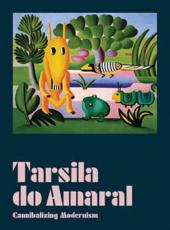
2019, ISBN: 9788531000706
Hardback, [PU: MASP], The luminous, revelatory landscapes of the pioneering Latin American modernist, in a deluxe production A New York Times critics' pick Best Art Books 2019 Featurin… mais…
| BookDepository.com Custos de envio:Versandkostenfrei. (EUR 0.00) Details... |

2019, ISBN: 9788531000706
MASP, Gebundene Ausgabe, 232 Seiten, Publiziert: 2019-10-22T00:00:01Z, Produktgruppe: Buch, 3.35 kg, Verkaufsrang: 11804, Geschichte & Kritik, Film, Kunst & Kultur, Kategorien, Bücher, Fr… mais…
| amazon.de ThriftBooks-Chicago USA Gut Custos de envio:Gewöhnlich versandfertig in 2 bis 3 Tagen. Die angegebenen Versandkosten können von den tatsächlichen Kosten abweichen. (EUR 3.00) Details... |

2019, ISBN: 9788531000706
MASP, Gebundene Ausgabe, 232 Seiten, Publiziert: 2019-10-22T00:00:01Z, Produktgruppe: Buch, 3.35 kg, Verkaufsrang: 11791, Geschichte & Kritik, Film, Kunst & Kultur, Kategorien, Bücher, Fr… mais…
| amazon.de TheGlobalBuyer Custos de envio:Gewöhnlich versandfertig in 3 bis 4 Tagen. Die angegebenen Versandkosten können von den tatsächlichen Kosten abweichen. (EUR 3.00) Details... |

2019, ISBN: 9788531000706
MASP, Gebundene Ausgabe, 232 Seiten, Publiziert: 2019-10-22T00:00:01Z, Produktgruppe: Buch, 3.35 kg, Verkaufsrang: 11804, Geschichte & Kritik, Film, Kunst & Kultur, Kategorien, Bücher, Fr… mais…
| amazon.de TheGlobalBuyer Custos de envio:Gewöhnlich versandfertig in 3 bis 4 Tagen. Die angegebenen Versandkosten können von den tatsächlichen Kosten abweichen. (EUR 3.00) Details... |

ISBN: 9788531000706
hardback
| Blackwells.co.uk |


2019, ISBN: 9788531000706
Hardback, [PU: MASP], The luminous, revelatory landscapes of the pioneering Latin American modernist, in a deluxe production A New York Times critics' pick Best Art Books 2019 Featurin… mais…

Do Amaral, Tarsila, Carneiro, Amanda, Santoro, Artur:
Do Amaral, T: Tarsila Do Amaral: Cannibalizing Modernism - encadernada, livro de bolso2019, ISBN: 9788531000706
MASP, Gebundene Ausgabe, 232 Seiten, Publiziert: 2019-10-22T00:00:01Z, Produktgruppe: Buch, 3.35 kg, Verkaufsrang: 11804, Geschichte & Kritik, Film, Kunst & Kultur, Kategorien, Bücher, Fr… mais…

2019
ISBN: 9788531000706
MASP, Gebundene Ausgabe, 232 Seiten, Publiziert: 2019-10-22T00:00:01Z, Produktgruppe: Buch, 3.35 kg, Verkaufsrang: 11791, Geschichte & Kritik, Film, Kunst & Kultur, Kategorien, Bücher, Fr… mais…

2019, ISBN: 9788531000706
MASP, Gebundene Ausgabe, 232 Seiten, Publiziert: 2019-10-22T00:00:01Z, Produktgruppe: Buch, 3.35 kg, Verkaufsrang: 11804, Geschichte & Kritik, Film, Kunst & Kultur, Kategorien, Bücher, Fr… mais…

no/na Blackwells.co.uk
ISBN: 9788531000706
hardback
Dados bibliográficos do melhor livro correspondente
| Autor: | |
| Título: | |
| Número ISBN: |
Dados detalhados do livro - Do Amaral, T: Tarsila Do Amaral: Cannibalizing Modernism
EAN (ISBN-13): 9788531000706
ISBN (ISBN-10): 853100070X
Livro de capa dura
Livro de bolso
Ano de publicação: 2019
Editor/Editora: Pedrosa, Adriano, Oliva, Fernando, MASP
Livro na base de dados desde 2019-11-08T08:44:45-03:00 (Sao Paulo)
Página de detalhes modificada pela última vez em 2023-02-21T14:49:50-03:00 (Sao Paulo)
Número ISBN/EAN: 9788531000706
Número ISBN - Ortografia alternativa:
85-310-0070-X, 978-85-310-0070-6
Ortografia alternativa e termos de pesquisa relacionados:
Autor do livro: carneiro, chateaubriand, fernand leger, tarsila amaral, andre lhote, andré lhote, mario andrade, oswald andrade, santoro
Título do livro: tarsila amaral, adriano amaral
< Para arquivar...

